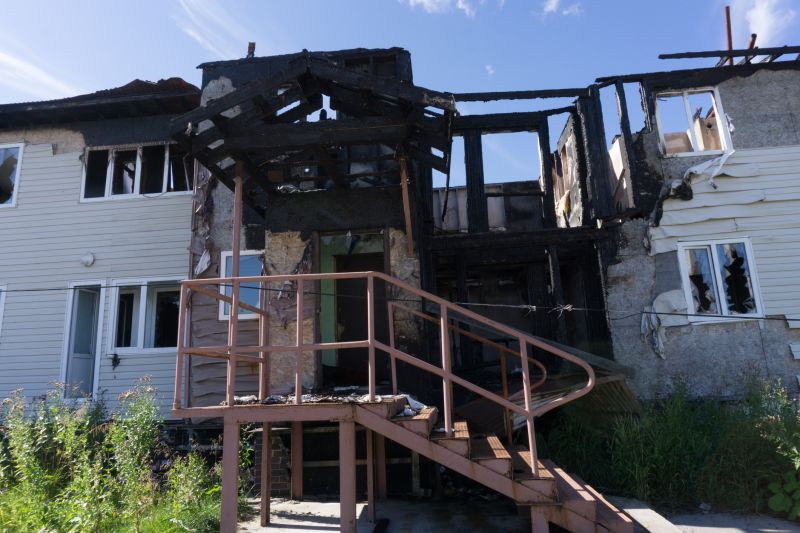Top-Rated Products For Fire Damage Restoration Projects
Browse trusted tools and materials designed to handle fire damage restoration with precision and effectiveness.
 Fire restoration products are essential components in the process of repairing and restoring properties affected by fire damage. These products encompass a wide range of tools and materials designed to address different aspects of fire damage, including smoke and soot removal, odor neutralization, structural repairs, and surface cleaning. Proper selection and utilization of these products can significantly improve the efficiency and effectiveness of restoration efforts.
Fire restoration products are essential components in the process of repairing and restoring properties affected by fire damage. These products encompass a wide range of tools and materials designed to address different aspects of fire damage, including smoke and soot removal, odor neutralization, structural repairs, and surface cleaning. Proper selection and utilization of these products can significantly improve the efficiency and effectiveness of restoration efforts.
Top Overall Option
Multi-Purpose Fire Damage Restoration Kit
A comprehensive kit that includes a variety of cleaning agents, odor neutralizers, and protective gear designed to address multiple aspects of fire damage. Ideal for both professional restorers and serious DIYers, this all-in-one solution offers versatility and convenience in managing fire-related repairs.
Types of Products For Fire Restorations
Soot and Smoke Cleaners
Specialized solutions designed to break down and remove soot and smoke residues from surfaces and materials.
Odor Neutralizers
Products formulated to eliminate or mask persistent fire odors using chemical or ozone-based methods.
Fire-Resistant Drywall and Panels
Building materials that resist fire spread and provide structural integrity during restoration.
Surface Cleaning Agents
Heavy-duty cleaners for cleaning walls, ceilings, and other surfaces affected by smoke and soot.
Air Scrubbers and Filtration Systems
Equipment that filters airborne particles and improves indoor air quality during restoration.
Ozone Generators
Devices that produce ozone to neutralize odors and airborne contaminants caused by fire damage.
Protective Gear and Masks
Personal protective equipment to ensure safety during cleanup and repair work.
Sealants and Fire-Resistant Coatings
Materials used to seal surfaces and prevent further fire spread or damage.
Structural Repair Materials
Products like fire-resistant drywall, framing, and insulation for rebuilding damaged structures.
Water Extraction and Drying Equipment
Tools designed to remove water used during firefighting efforts and dry out affected areas.
Dehumidifiers
Equipment that reduces moisture levels to prevent mold growth during restoration.
Thermal Imaging Cameras
Devices used to detect hidden hotspots and assess fire damage in structures.
Cleaning Wipes and Sponges
Convenient tools for quick surface cleaning and soot removal in small areas.
Chemical Sprays for Soot Neutralization
Sprays formulated to chemically neutralize soot residues on various surfaces.
Fireproof Storage Containers
Secure containers for storing valuable or sensitive items during restoration work.
Popular Choices
Widely used products that help reduce lingering smoke smells in homes and businesses.
Heavy-duty cleaners favored for their effectiveness in removing soot from various surfaces.
Popular for improving indoor air quality during and after restoration.
Commonly used devices that help eliminate stubborn fire odors in enclosed spaces.
Frequently selected building materials for structural repair and fire resistance.
Essential safety equipment for workers handling soot and chemical cleaners.
Popular tools for assessing damage and locating hidden hotspots.
Key equipment to prevent mold growth and control humidity levels during restoration.
Convenient for quick cleanup of soot and smoke residues in affected areas.
Effective solutions used by many professionals to neutralize soot residues chemically.
Popular for safeguarding valuables during the restoration process.
When dealing with fire damage, it is important to understand that each situation may require a tailored approach. For example, soot and smoke residues can penetrate porous materials, necessitating specialized cleaning agents and equipment. Odor removal products often involve chemical or ozone-based solutions that help neutralize persistent smells. Structural repair materials, such as fire-resistant drywall and sealants, are also vital for restoring the integrity of the building.
Restoration professionals often rely on a combination of products to achieve optimal results. High-quality cleaning agents can help remove stubborn residues, while air scrubbers and ozone generators are used to improve indoor air quality by eliminating airborne contaminants. Additionally, protective gear and safety equipment are critical to ensure the safety of workers during the restoration process. Proper training and knowledge about product application are equally important to maximize outcomes and ensure safety standards are met.
Navigating the wide array of fire restoration products can be challenging for both professionals and homeowners attempting DIY repairs. Understanding the specific needs of your project, such as the extent of damage and the types of materials affected, can help guide your product choices. Consulting with restoration experts or suppliers in Nampa, ID, can provide valuable insights and access to the most suitable solutions for your situation.
Key Buying Considerations
- Assess the extent of fire and smoke damage to determine the necessary products.
- Choose products compatible with the surfaces and materials affected, such as porous or non-porous surfaces.
- Prioritize safety features and certifications for protective gear and chemical cleaners.
- Consider the size and coverage capacity of air filtration and odor neutralization devices.
- Evaluate the ease of use and application methods for cleaning agents and repair materials.
- Check for compatibility with existing restoration equipment, such as dehumidifiers or thermal cameras.
- Review product specifications for chemical composition to ensure effectiveness and safety.
- Opt for versatile products that can address multiple issues, such as combined soot and odor removal.
- Determine the level of professional expertise required for product application and handling.
- Factor in storage and transportation needs, especially for bulky or heavy equipment.
- Read customer reviews and expert recommendations to gauge real-world performance.
- Verify availability of replacement parts and ongoing support for equipment.
- Consider environmental conditions in Nampa, ID, such as humidity levels that may affect restoration.
- Budget appropriately for the scope of the project, balancing cost with quality and effectiveness.
- Ensure compliance with local regulations and safety standards during restoration activities.
